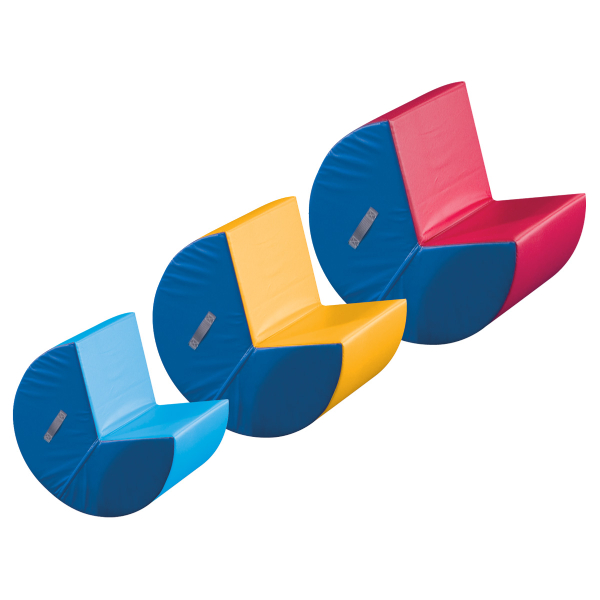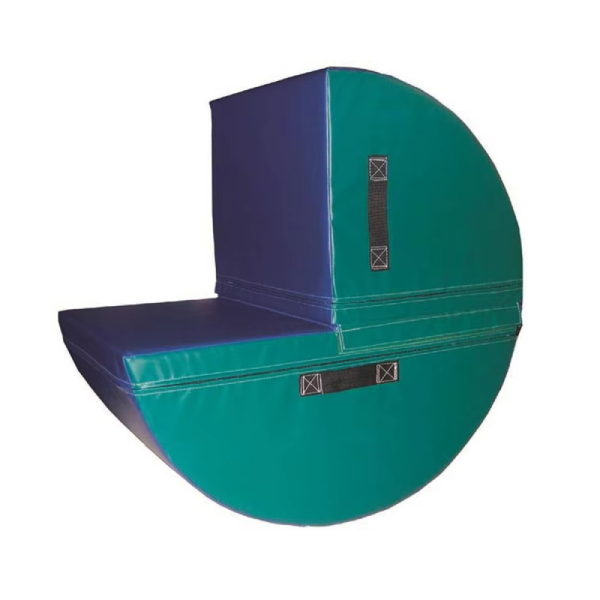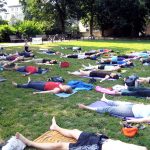What is a Back Handspring?
A back handspring is a dynamic gymnastics skill. It involves jumping backwards onto the hands, then pushing off into a handstand, and finally flipping to land back on the feet. Mastering this move requires strength, flexibility, and precision.
This skill forms a core part of many gymnastics routines and is crucial for competitive gymnasts. It is often seen in cheerleading, acrobatic sports, and even some dance forms. Learning and perfecting a back handspring can significantly elevate an athlete’s performance.

Due to its complex nature, proper training under a skilled back handspring trainer is essential. The trainer provides not only technical guidance but also ensures safety during practice. Whether you’re a beginner or an advanced gymnast, the right training can make a significant difference in mastering this skill.
The Importance of Proper Training
Proper training is crucial when learning the back handspring. With its technical demands and physical risks, expert guidance is essential. A trained back handspring trainer ensures you learn correct form. This prevents injuries and improves effectiveness. Such training boosts confidence and refines skills for higher competitive levels. The chosen instructor’s experience and knowledge play pivotal roles in a gymnast’s success. Hence, selecting the right trainer is a vital step in mastering this complex gymnastic move. Just as mastering a back handspring requires expert guidance, the circle of life yoga emphasizes personalized instruction for a safe and effective practice.
Qualities of an Effective Back Handspring Trainer
When searching for a back handspring trainer, there are crucial qualities to consider. These qualities will determine the effectiveness of your training and the overall success in mastering the back handspring. Below are key qualities a potential trainer should possess:
- Expertise and Experience: A proficient back handspring trainer should have a solid background in gymnastics and specific experience in teaching back handsprings.
- Communication Skills: The ability to clearly communicate instructions, corrections, and encouragements is essential. This ensures that students understand and accurately execute each movement.
- Patience: Learning a back handspring can be challenging. A good trainer is patient, giving students the time they need to learn and progress.
- Attention to Safety: Given the physical demands and risks associated with a back handspring, a trainer must prioritize safety, providing safe practice environments and techniques.
- Adaptability: Every gymnast has a unique learning curve. A superb trainer adjusts techniques and training methods to fit individual needs and skill levels.
- Positive Attitude and Encouragement: Motivation plays a significant role in sports training. A trainer who fosters a positive atmosphere and encourages students can greatly enhance their performance and enjoyment.
Choosing a trainer with these qualities ensures a productive and safe learning experience as you work towards mastering the back handspring.

Types of Back Handspring Trainers and Equipment
When searching for a back handspring trainer, it’s important to understand the different types available and the equipment they use. This knowledge will help you choose the most suitable trainer for your needs.
Personal Trainers
Personal trainers typically work one-on-one with athletes. They provide individualized attention and customize training plans according to the gymnast’s strengths and weaknesses. This type of training is ideal for those who need focused guidance and personalized feedback. Yoga in the circle can also benefit from personalized instruction, much like personal trainers tailor their guidance to each athlete’s unique abilities and needs.
Group Class Trainers
Group class trainers teach the back handspring in a class setting. This environment allows students to learn from peers and provides a supportive community. It is less expensive than personal training and is great for those who enjoy learning in a group.
Online Trainers
Online trainers offer flexibility and convenience. They provide training through digital platforms, allowing athletes to practice at home. This type of training is beneficial for gymnasts with busy schedules or limited access to local gymnastic facilities.
Training Equipment
Key equipment for back handspring training includes:
- Gymnastics Mats: Provide cushioning and safety during practice.
- Incline Mats: Help beginners understand the motion of a back handspring.
- Spotting Belts: Ensure safety by preventing falls during the learning phase.
- Balance Beams: Fine-tune body control and coordination.
Selecting the right type of back handspring trainer and using the appropriate equipment can significantly impact your learning and mastery of this skill.
How to Work with a Back Handspring Trainer
Working with a back handspring trainer is a collaborative effort. Here are some tips to ensure a productive relationship:
- Communicate Openly: Regularly share your goals and challenges with your trainer. Honest communication helps tailor your training effectively.
- Follow Instructions Carefully: To master a back handspring, precise technique is crucial. Always follow your trainer’s instructions closely.
- Practice Consistently: Regular practice is key to improvement. Make sure to practice the skills learned during training sessions at home, if possible.
- Be Open to Feedback: Constructive criticism is vital for growth. Accept feedback graciously and use it to improve your technique.
- Set Realistic Goals: Work with your back handspring trainer to set achievable milestones. This keeps you motivated and focused.
- Show Persistence: Mastery of complex skills like the back handspring takes time. Stay persistent, even when progress seems slow.
By following these guidelines, you can optimize your training sessions with your back handspring trainer and make significant strides in mastering this challenging gymnastic move.
Common Mistakes to Avoid During Training
When pursuing mastery of the back handspring, it’s just as vital to know what not to do as it is to follow best practices. Avoiding common mistakes can prevent setbacks, accelerate progress, and help maintain safety throughout your training journey with your back handspring trainer. Here are key errors to watch out for:
- Neglecting Warm-ups: Failing to properly warm up before practicing can lead to injuries. Always start with stretches and light exercise.
- Incorrect Body Position: Don’t arch your back or bend your arms during the back handspring. Keep your body tight and in proper alignment.
- Rushing the Process: Progress takes time. Don’t try to rush through skills before mastering the basics. Be patient and follow your trainer’s pace.
- Training Without Spotting: Especially for beginners, practicing without a trainer or spotter can be dangerous. Always have someone watch or assist you.
- Skipping Fundamental Skills: A solid foundation is essential. Don’t move on to a back handspring without a strong handstand and backbend.
- Lack of Consistency: Sporadic practice won’t yield results. Stick to a consistent training schedule for better outcomes.
- Ignoring Personal Limits: Pushing your body too hard can result in injury. Pay attention to your limits and communicate with your trainer.
By steering clear of these mistakes and working closely with your back handspring trainer, you’ll set yourself up for a safer and more effective learning experience. Remember, overcoming these common pitfalls is a crucial part of your journey toward achieving a perfect back handspring. Practicing at Dupont Circle Yoga can help you focus on body awareness, enhancing your back handspring training and reducing the risk of common mistakes.

Progress Tracking and Setting Goals
Monitoring progress plays a vital role in mastering a back handspring. Setting clear, achievable goals helps guide your training. Here’s how to effectively track your progress and set meaningful goals with your back handspring trainer:
- Establish Baseline Skills: Begin by understanding your starting point with your back handspring trainer.
- Set Short-Term Goals: Break down your learning process into manageable milestones. Each should build towards a larger objective.
- Use a Training Journal: Keep a detailed record of your practices and progress. Note any improvements or areas needing more attention.
- Review Regularly: Regularly check your progress with your trainer. This ensures you’re on the right track and making steady improvements.
- Adjust Goals as Needed: Be flexible with your goals. As you develop, some targets may need revision or refinement.
- Celebrate Achievements: Recognize and celebrate when you hit your goals. This boosts motivation and commitment.
By using these strategies, you are better equipped to progress steadily in your back handspring training. Consistent effort and clear objectives will lead to success.
Where to Find Quality Back Handspring Training
Finding a quality back handspring trainer is key to mastering the skill. Here are essential tips:
- Gymnastics Clubs: Begin at local gymnastics clubs. They often provide experienced trainers for all levels.
- Sports Centers: Check nearby sports centers. Many offer gymnastics classes with skilled trainers.
- School Programs: Explore school or university athletic programs. They may have coaches who specialize in gymnastics.
- Online Directories: Use online directories to search for trainers. Look for those with good reviews and qualifications.
- Referrals: Ask fellow gymnasts or athletes. Personal recommendations often lead to the best trainers.
- Social Media: Search on platforms like Instagram or Facebook. Many trainers post their work and offer classes.
- Local Ads: Look for postings at community centers or online community boards.
- Competitions: Attend local gymnastics meets. They are great places to connect with trainers and other gymnasts.
Remember to check a trainer’s experience, credentials, and training style before making a choice. Opt for a back handspring trainer who fits your learning style and goals.

